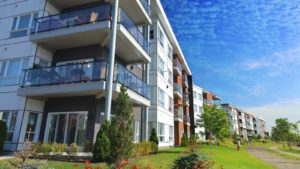Investigating Ways Different Building Materials Influence Wireless Signal Strength in Multi-Unit Units
Wiki Article
Wireless networking has evolved into an essential part of our everyday lives, particularly in multi-unit units such as condominiums and flats. These spaces often have a variety of construction materials that can impact the strength and quality of wireless signals. When planning a network for these environments, it is important to comprehend how different materials respond with radio signals. This understanding can help ensure that residents receive stable, dependable internet access throughout their homes.

One of the primary materials found in many multi-dwelling units is cement. Cement walls are recognized for their thickness, which can significantly impede Wi-Fi signals. The dense structure of cement blocks and repels radio waves, making it difficult for signals to penetrate. As a result, zones positioned further away from the access point may encounter weaker internet connectivity. Therefore, when planning a Wi-Fi network in a building with cement walls, it may be necessary to use additional access points or signal boosters to ensure good coverage.
Another common material is metal, which can also interfere with Wi-Fi signals. Metal objects, such as pipes and steel framing, can create barriers that reflect or block signals entirely. This reflection effect leads to dead spots where the Wi-Fi signal is low or non-existent. In multi-dwelling units, a builder’s choice to use metal can complicate the placement of routers and other networking equipment. To overcome this issue, thoughtful consideration must be applied to router placement and the use of distributed networks that can offer more broad coverage across multiple levels and areas.
Wood is another material that impacts Wi-Fi signal strength but generally does so less severely than concrete or metal. Timber-based walls and floors tend to enable signals to propagate more easily; however, other factors such as insulation and fixtures can still obstruct signal strength. In a multi-dwelling unit made primarily of timber, tenants might find good coverage in most areas but could encounter issues if there are many obstacles in the way. Identifying potential interferences in the layout of an unit can help optimize Wi-Fi efficiency.
In addition to acknowledging how materials affect signals, it is necessary to evaluate the layout of a multi-dwelling unit. The placement of routers should be central to the layout whenever possible, allowing for efficient signal distribution. click this link here now Sometimes, physical barriers like hallways and stairwells can further complicate signal strength. Occupants may also gain from using Wi-Fi extenders or mesh systems that help preserve strong connections throughout larger spaces. Taking into account both building materials and layout will significantly enhance the overall Wi-Fi experience.
In conclusion, building materials play a key role in affecting Wi-Fi signal strength in multi-dwelling units. Cement and metal are especially challenging due to their ability to obstruct wireless signals, while timber offers relatively better performance but still presents some challenges. By understanding these considerations, developers and residents alike can internet for multi dwelling units make educated decisions about network design and equipment placement. Ensuring reliable internet access is vital for modern living, and considering these elements will lead to a more integrated environment for everyone involved.